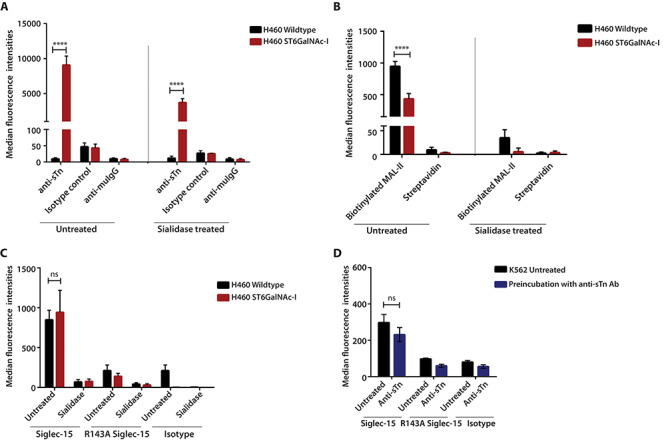Fig. 3.

Enhanced sialyl Tn expression does not lead to increased Siglec-15-Fc binding. (A) NCI-H460 wildtype cells and NCI-H460 cells over-expressing ST6GalNAc-I were analyzed for sTn expression using mouse anti-sTn antibody (clone 3F1) followed by APC-conjugated anti-mouse IgG. Specificity of antibody binding was analyzed using cells pretreated with sialidase to destroy the epitope. An isotype-matched mouse IgG was used as the negative control. (B) NCI-H460 wildtype and ST6GalNAc-I-expressing cells were stained using biotinylated MAL-II lectin (5 μg/mL) followed by streptavidin-FITC. Staining with streptavidin-FITC alone was used as the negative control. (C) H460 wildtype and ST6GalNAc-I-expressing cells, untreated or pretreated with sialidase, were incubated with Siglec-15-Fc wildtype and R143A mutant precomplexed with anti-human IgG1 Fc-FITC (at ratio 1:1) and analyzed by flow cytometry. Negative controls were incubations with human IgG1 precomplexed with anti-human IgG1 Fc-FITC (at ratio 1:1). (D) K562 cells, preincubated with or without anti-sTn antibody (20 μg/mL), were analyzed for Siglec-15 binding as described in (C) above. Results are plotted as median fluorescence intensity (MFI) ± SEM for 3 independent experiments, relative to the signal with secondary antibody alone. ****, P < 0.001; ns, not significant.
